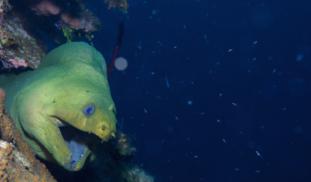Please wait...
About This Project
Aside from their beauty, California kelp forests provide a host of both ecological and economical benefits. Several commercial and recreational species call kelp forests their home, such as lobster, calico bass, abalone, among others. Furthermore, the very presence of kelp forests along the coast provides some relief from beach erosion due to storm surges. While kelp forests and the aforementioned ecosystem services are relatively well-studied, we know little about the California moray, a resident predator that occupies the rocky reefs within this ecosystem. The California moray, the only moray found off the golden state, is elusive and our goal is to uncover its feeding ecology and basic biology providing critical baseline data.

Browse Other Projects on Experiment
Related Projects
Hippos as sentinels: Detecting pollution and pathogens
In western Uganda, hippos move between land and the Kazinga Channel, making them ideal sentinels of ecosystem...
Documenting unique plant and insect species within Siskiyou County's biodiverse landscape
The biodiversity in Siskiyou County is inadequately documented because of prior inaccessibility. We seek...
The Ridgeline Project: Exploring the last strongholds of Costa Rica's wild cats
The Ridgeline Project, led by The Wild Cat Imaging Project and Las Oncas, studies six threatened wild cat...



